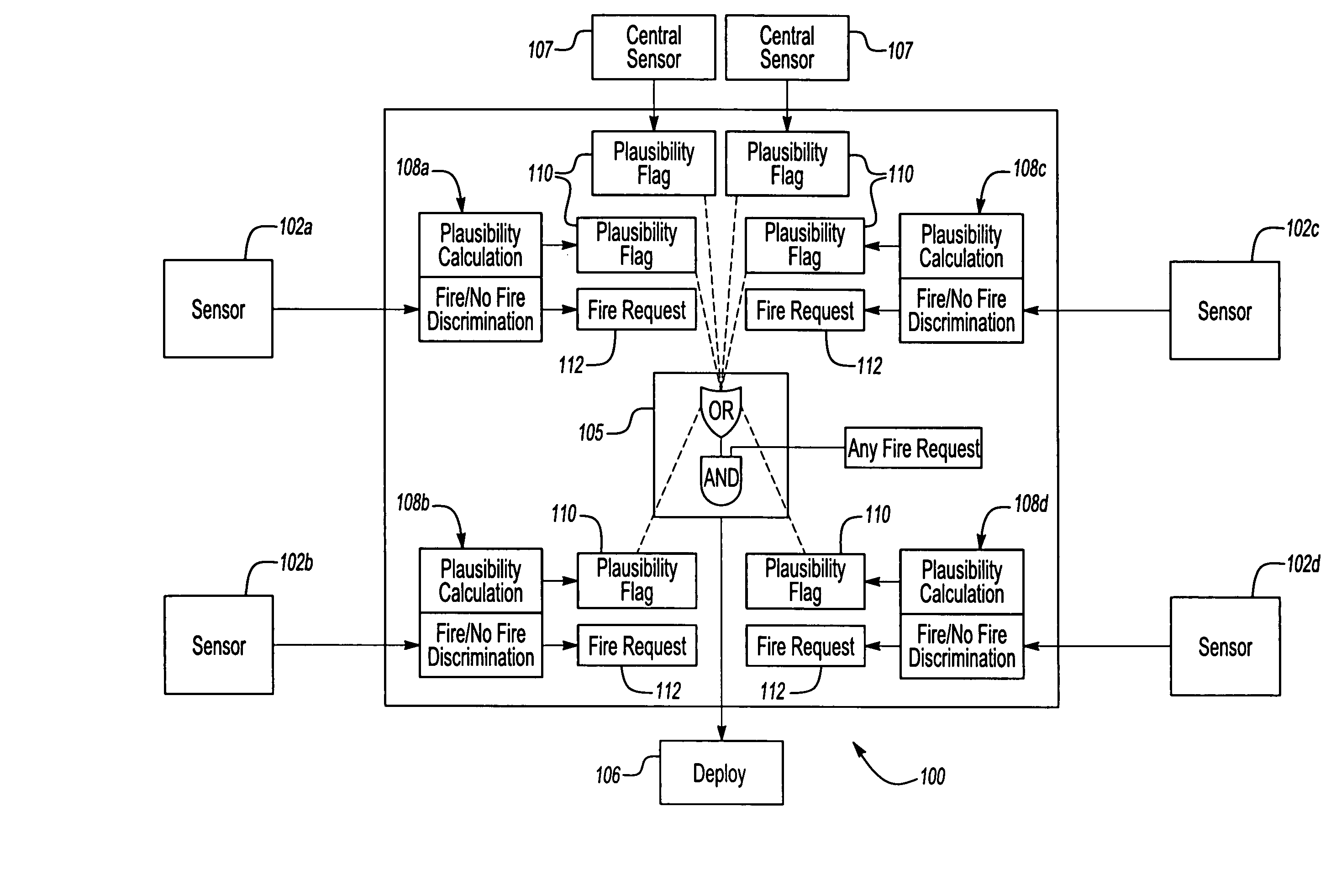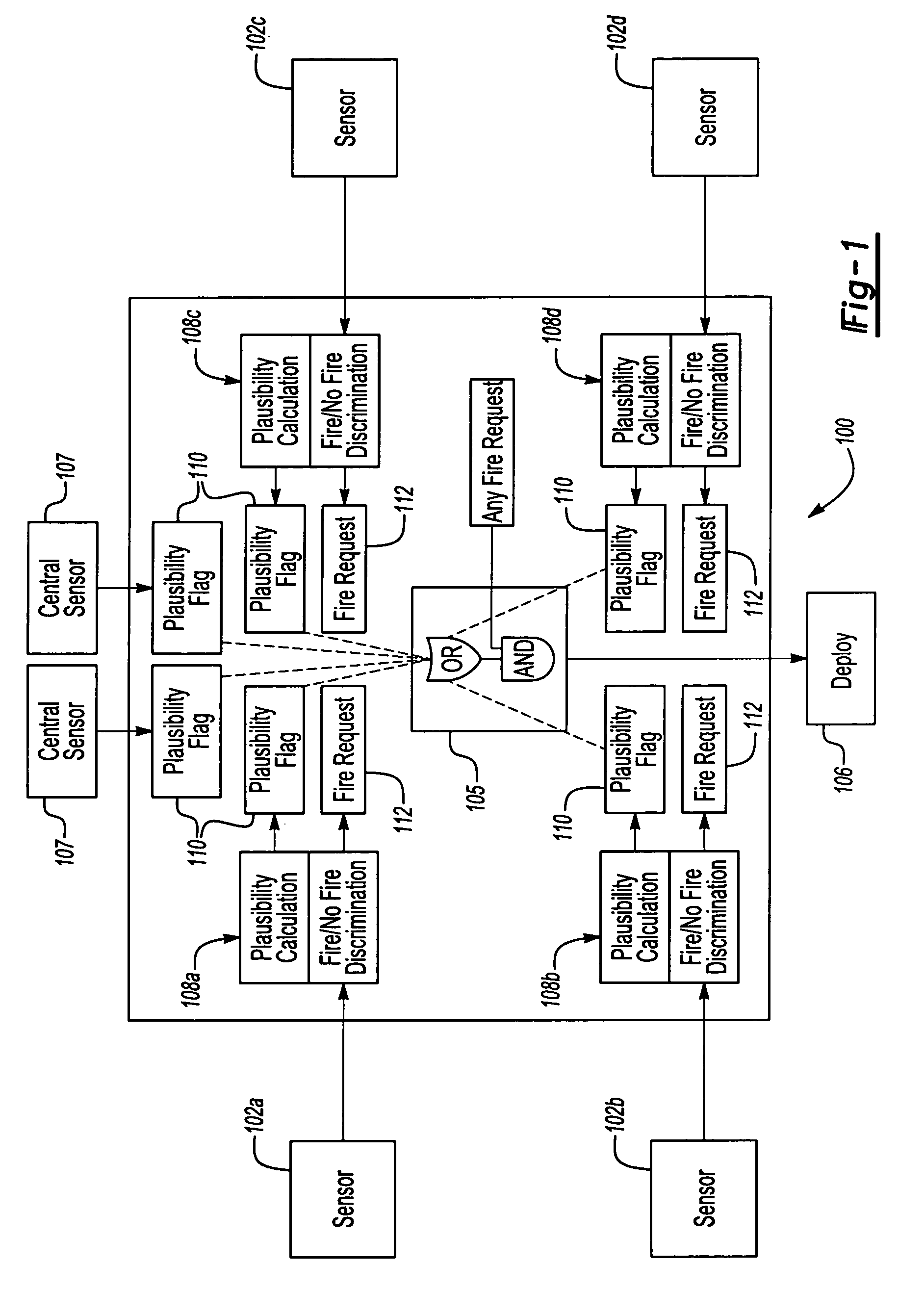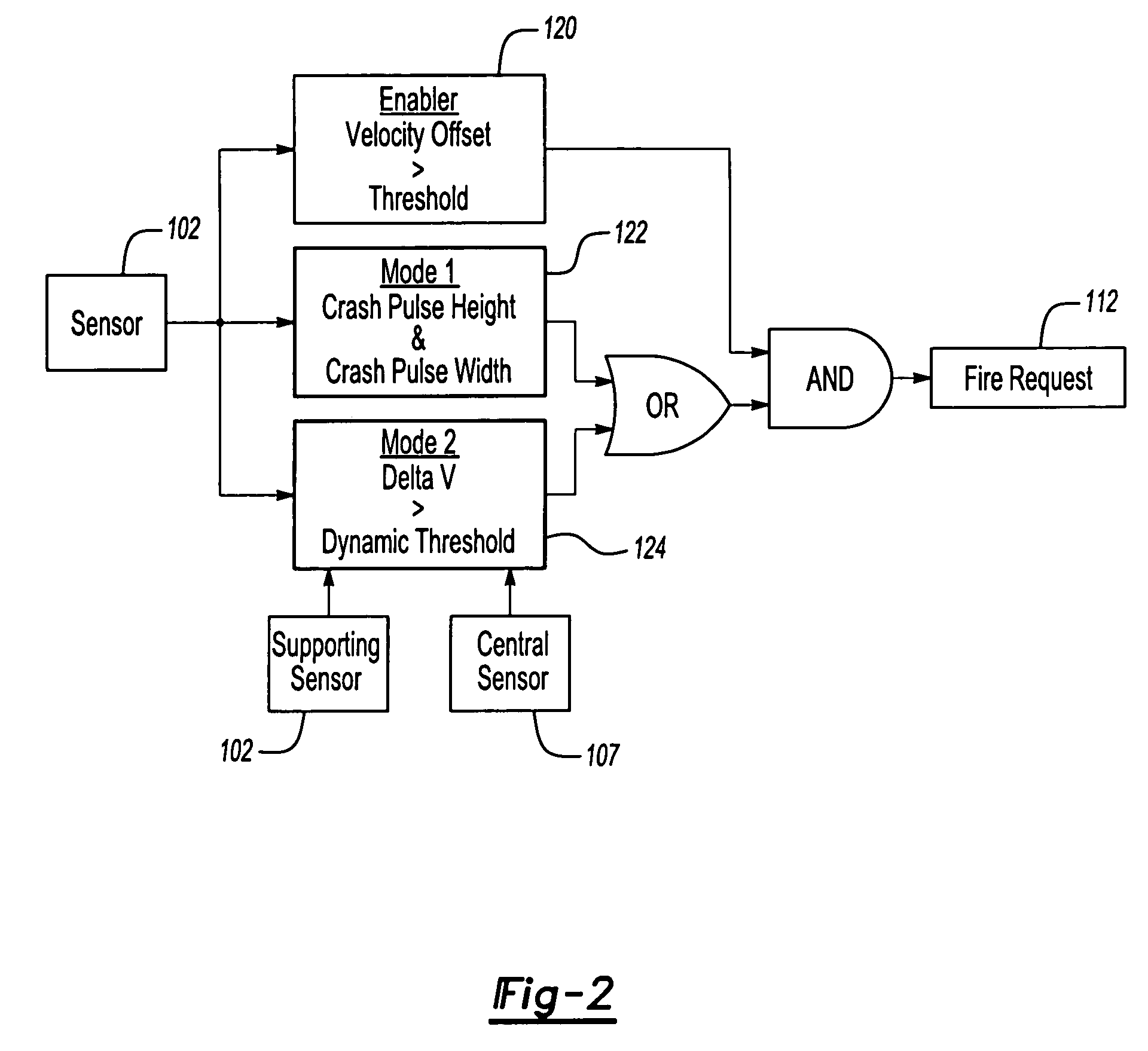Vehicle passenger restraint system with distributed sensors
- Summary
- Abstract
- Description
- Claims
- Application Information
AI Technical Summary
Benefits of technology
Problems solved by technology
Method used
Image
Examples
Embodiment Construction
[0023]The invention is generally directed to a distributed sensor system 100 for a vehicle 101. The system 100 includes a plurality of sensors 102a, 102b, 102c, 102d at various locations in the vehicle. The sensors 102 may be any appropriate type of sensor, such as an acceleration sensor or an air pressure sensor, to determine whether to deploy one or more restraints (not shown), such as airbags, in the vehicle. Note that different types of sensors 102 can be used in the same system 100. Further, the sensor arrangement may be arranged symmetrically with respect to the driver and passenger sides of the vehicle, if desired. For example, sensors may be arranged in rows, where the sensors in each row are the same type and have the same sensing range. The specific type of sensor 102 used at any given location and / or in a given vehicle depends on, for example, the system configuration, desired system response, and / or the individual characteristics of a given vehicle platform.
[0024]In one ...
PUM
 Login to View More
Login to View More Abstract
Description
Claims
Application Information
 Login to View More
Login to View More - R&D
- Intellectual Property
- Life Sciences
- Materials
- Tech Scout
- Unparalleled Data Quality
- Higher Quality Content
- 60% Fewer Hallucinations
Browse by: Latest US Patents, China's latest patents, Technical Efficacy Thesaurus, Application Domain, Technology Topic, Popular Technical Reports.
© 2025 PatSnap. All rights reserved.Legal|Privacy policy|Modern Slavery Act Transparency Statement|Sitemap|About US| Contact US: help@patsnap.com



